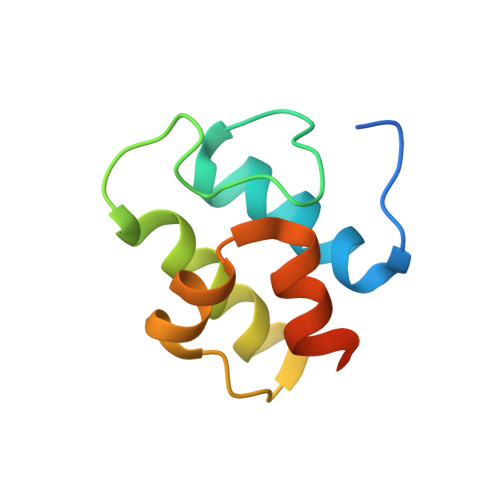Solution structure of PCP, a prototype for the peptidyl carrier domains of modular peptide synthetases.
Weber, T., Baumgartner, R., Renner, C., Marahiel, M.A., Holak, T.A.(2000) Structure 8: 407-418
- PubMed: 10801488
- DOI: https://doi.org/10.1016/s0969-2126(00)00120-9
- Primary Citation of Related Structures:
1DNY - PubMed Abstract:
Nonribosomal peptide synthetases (NRPSs) are large modular enzymes responsible for the synthesis of a variety of microbial bioactive peptides. They consist of modules that each recognise and incorporate one specific amino acid into the peptide product. A module comprises several domains, which carry out the individual reaction steps. After activation by the adenylation domain, the amino acid substrate is covalently tethered to a 4'-phosphopantetheinyl cofactor of a peptidyl carrier domain (PCP) that passes the substrate to the reaction centres of the consecutive domains. The solution structure of PCP, a distinct peptidyl carrier protein derived from the equivalent domain of an NRPS, was solved using NMR techniques. PCP is a distorted four-helix bundle with an extended loop between the first two helices. Its overall fold resembles the topology of acyl carrier proteins (ACPs) from Escherichia coli fatty acid synthase and actinorhodin polyketide synthase from Streptomyces coelicolor; however, the surface polarity and the length and relative alignment of the helices are different. The conserved serine, which is the cofactor-binding site, has the same location as in the ACPs and is situated within a stretch of seven flexible residues. The structure of PCP reflects its character as a protein domain. The fold is well defined between residues 8 and 82 and the structural core of the PCP domain can now be defined as a region spanning 37 amino acids in both directions from the conserved serine. The flexibility of the post-translationally modified site might have implications for interactions with the cooperating proteins or NRPS domains.
- Biochemie/Fachbereich Chemie, Philipps-Universität, Marburg, 35032, Germany.
Organizational Affiliation:
















